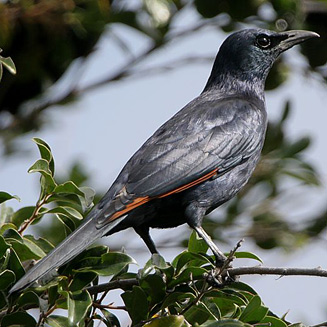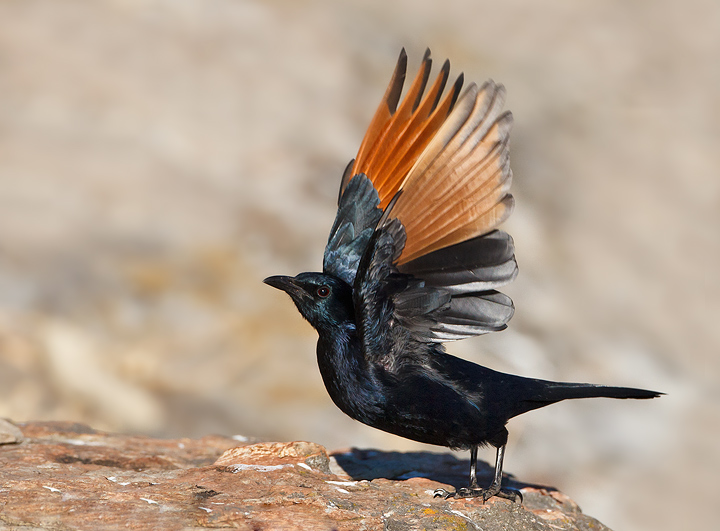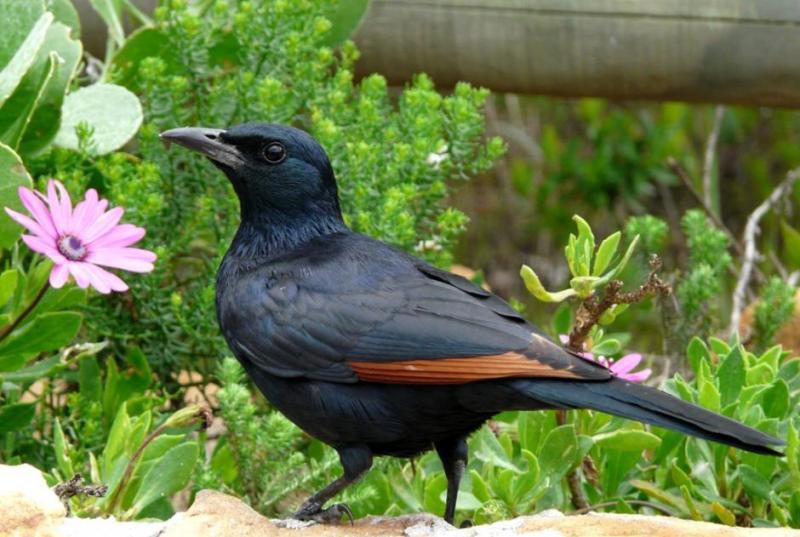
Onychognathus morio
SUBFAMILY
Sturninae
TAXONOMY
Turdus morio Linnaeus, 1766, Cape of Good Hope.
OTHER COMMON NAMES
English: Redwing, African red-winged starling; French: Rufipenne
morio; German: Rotschwingenstar; Spanish: Estornino
de Alas Rojas Africano.
PHYSICAL CHARACTERISTICS
10.6–12.2 in (27–31 cm); weight 4.1–5.6 oz (117–158 g). Dark
plumage with dark blue sheen. Reddish brown primaries. Eyes
red. Juvenile similar to adult male, but less glossy and with
brown eyes and bill.
DISTRIBUTION
East and southeast Africa, from Kenya to South Africa; most
common at 3,000–7,500 ft (915–2,285 m).
HABITAT
Rocky hills in savanna, now commonly nests in urban areas.
BEHAVIOR
Endemic resident. Gathers in flocks that can at times exceed
1,000 birds.
FEEDING ECOLOGY AND DIET
Somewhat omnivorous; eats fruits of many trees, but also takes
nectar, insects, other arthropods, and small vertebrates, including
nestlings of other birds.
REPRODUCTIVE BIOLOGY
Cavity nester. Clutch of two to four blue eggs with red-brown
spots is incubated mainly by the female for 13–14 days. Hatchlings
are pink with tufts of gray down on top of the head and
mid-back. Both adults feed nestlings until they fledge at 22–28
days. Nest sites are often reused.
CONSERVATION STATUS
Not threatened.
SIGNIFICANCE TO HUMANS
None known.
Photo Gallery of - Red-winged starling




 Animalia Life
Animalia Life